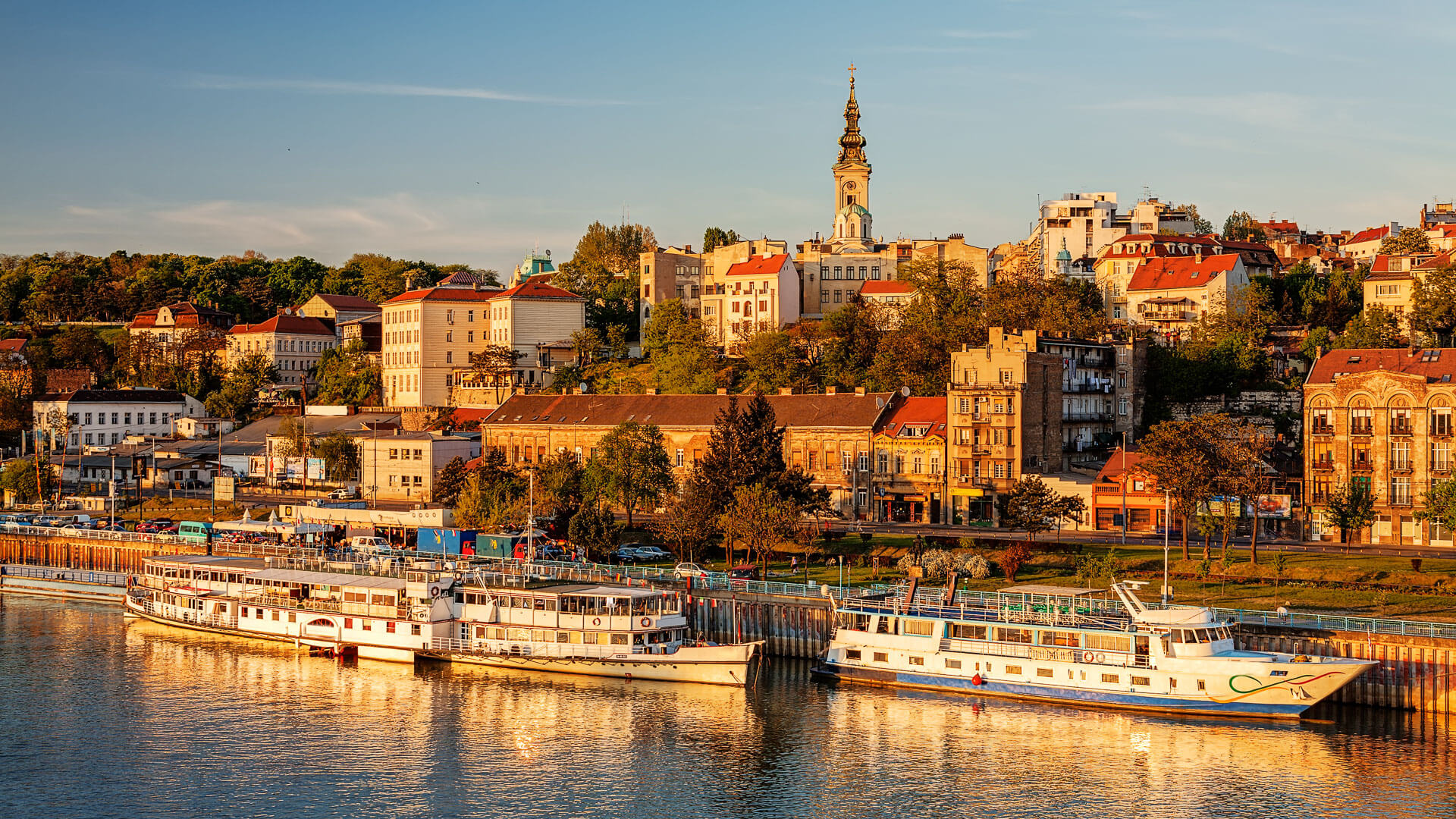Fort San Pedro: A Historical Landmark in Cebu City
Fort San Pedro is a military defense structure positioned in Cebu, Philippines. It was built by the Spanish under the command of Miguel López de Legazpi, the primary governor of the Captaincy General of the Philippines. The fort is situated in the world now called Plaza Independencia, within the pier area of the town.

Considered the oldest and smallest fort within the Philippines, Fort San Pedro covers an area of two,025 square meters. Its partitions are 20 feet tall and eight feet thick, forming a triangle with uneven lengths. Two sides face the ocean, and the opposite faces the land, where the present entrance gate to the fort is positioned. The fort holds a wealthy history of the island and the historical events in the course of the Spanish rule.
Today, Fort San Pedro serves as a preferred tourist attraction in Cebu. Visitors can explore the fort and find out about its history through its exhibits and displays. The positioning also offers stunning views of the encircling area, including the ocean and nearby parks.
Historical Background
Fort San Pedro, also often called Fuerte de San Pedro, is a military defense structure in Cebu, Philippines. It was built by the Spaniards in 1565 under the command of Miguel López de Legazpi, the primary Spanish conquistador and governor of the Captaincy General of the Philippines. The fort was constructed to guard the Spanish settlement in Cebu from attacks by local pirates, Muslim raiders, and other foreign invaders.

Spanish Settlement
Fort San Pedro played an important role within the Spanish rule of the Philippines. It served as the middle of Spanish power in Cebu and was the location of various battles and conflicts. The fort was product of wood until it was rebuilt with stone within the late seventeenth century. It was also used as a jail and a hospital for Spanish soldiers.
Philippine Revolution
Fort San Pedro was used as a penitentiary for local rebels in the course of the Philippine Revolution from 1896 to 1898. Filipino revolutionaries also captured the fort in 1898 after Manila Bay’s decisive battle. Nevertheless, it was later recaptured by American forces in the course of the Philippine-American War.
American Warwick Barracks
Within the early 1900s, Fort San Pedro was converted into American Warwick Barracks, named after Major General Arthur S. Warwick, the primary American military governor of Cebu. The barracks were used to deal with American soldiers and their families until the outbreak of World War II.

World War II
During World War II, the Japanese and American forces used Fort San Pedro as a military defense structure. The Japanese used the fort as a jail camp for American and Filipino prisoners of war, while the Americans used it as a military hospital. After the war, the fort was restored and converted right into a museum.

Architecture and Design
Fort San Pedro is understood for its unique triangular bastion fort design. The fort was constructed by Spanish and Cebuano laborers using stone mortar and wood materials.
Triangular Bastion Fort
The fort is designed as a triangular bastion fort, a fortification commonly used in the course of the sixteenth century. The triangular shape allowed for higher defense against attacks from multiple angles. The fort has three bastions, each with its own artillery.
Partitions and Bastions
The fort’s partitions are product of stone mortar, roughly 6.1 meters high and a couple of.4 meters thick. The bastions are designed to guard the fort and its inhabitants higher. The triangular shape of the bastions allows for a broader range of fireplace, making it difficult for attackers to approach the fort.
Viviende Del Teniente
Viviende Del Teniente, which suggests “Lieutenant’s Quarters” in Spanish, is a small constructing contained in the fort. It was used as a residence for the fort’s commanding officer in the course of the Spanish colonial period. The constructing is product of wood and has a steep roof product of nipa palm.
Cuerpo De Guardia
Cuerpo De Guardia, which suggests “Guardhouse” in Spanish, is a small constructing near the fort’s entrance. It was used as a barracks for the soldiers guarding the fort. The constructing is product of stone and has a small courtyard.
Museum and Exhibits
Fort San Pedro is a historical landmark and a museum showcasing the wealthy history of the Philippines. The museum has a group of artifacts, documents, paintings, sculptures, and galleries that display the legacies of the Spanish government.
Artifacts and Galleries
The museum has an enormous collection of artifacts from archaeological sites in Cebu Province, including relics and artifacts of the San Diego Galleon, akin to earthenware vessels with complex forms and weird designs, porcelain, and bronze cannons. Visitors can learn concerning the history of Cebu and the beginnings of the Spanish rule within the Philippines through these artifacts.
Moreover, the museum has galleries that showcase the several points of the Spanish colonization of the Philippines. The galleries include the Spanish Colonial Era Gallery, the Fort San Pedro Gallery, and the Military History Gallery. These galleries provide a glimpse into the Spanish influence on the Philippines and its impact on the country.
Sculptures and Artwork
The museum also has a group of sculptures and artwork depicting the Philippines’ wealthy culture and history. The sculptures include the statue of Miguel Lopez de Legazpi, the founding father of Cebu City, and the statue of Rajah Humabon, the ruler of Cebu, in the course of the arrival of the Spanish.
The museum also has paintings that depict the several events within the history of the Philippines, including the Battle of Mactan and the arrival of the Spanish. These paintings provide a visible representation of the events that shaped the Philippines.
Location and Accessibility
Fort San Pedro is situated within the pier area of the town, near Plaza Independencia, at A. Pigafetta Street. Visitors can reach the fort through various modes of transportation, including jeepneys, taxis, and personal cars.
Plaza Independencia
Plaza Independencia is a preferred landmark in Cebu City and serves because the primary entrance to Fort San Pedro. Visitors can easily reach the plaza by taking a taxi or jeepney. From there, the fort is just a brief walk away.
Pier Area
The fort is positioned within the pier area of Cebu City, making it accessible by sea. Visitors can take a ferry or boat to the pier, and from there, it’s just a brief walk to the fort.
Visitor Information
Entrance Fee
Visitors to Fort San Pedro must pay an Entrance fee of P30 per head. Students, PWD, and senior residents are entitled to a 20% discount upon presentation of a legitimate ID.
Operating Hours
Fort San Pedro is open to visitors each day from 8:00 AM to 7:00 PM. Visitors are advised to reach early to avoid the crowds and to have ample time to explore the fort.
Permit
Visitors usually are not required to acquire a permit to go to Fort San Pedro. Nevertheless, visitors who plan to take photographs or videos for industrial purposes must secure a permit from the Cebu City Tourism Commission.
Events and Occasions
Fort San Pedro is a historical landmark and a preferred venue for events and occasions. The fort’s spacious lawn and stunning architecture make it a perfect location for weddings, birthdays, and other celebrations.
Weddings
Many couples select Fort San Pedro as their wedding venue due to its picturesque setting and historical significance. The fort’s lush lawn and delightful gardens provide a romantic backdrop for wedding ceremonies and receptions. The fort’s interior can be available to be used, providing a novel and stylish atmosphere for indoor weddings.
The fort’s event staff can assist couples in planning their big day, from catering to decorations to music. They may also recommend local vendors for photography, floral arrangements, and other wedding services.
Birthdays
Fort San Pedro can be a preferred location for birthday celebrations. The spacious lawn can accommodate large groups of individuals, making it a superb selection for outdoor parties. The fort’s interior can be used for more intimate gatherings.
The fort’s event staff may also help plan birthday parties, from providing catering to arranging entertainment. They may also recommend local vendors for decorations, cake, and other party supplies.
Preservation and Management
Cebu City Government
The Cebu City Government assumed responsibility for managing and operating Fort San Pedro on February 1, 2008. Since then, it has prioritized heritage conservation and biodiversity preservation as overarching thrusts in its management. Town government has allocated funds for the maintenance and maintenance of the fort, ensuring that it stays in good condition for tourists and visitors.
City Executive Order No. 08-87
City Executive Order No. 08-87, signed on February 8, 2008, established the Plaza Independencia – Fort San Pedro Interim Policy and Advisory Board (PIFSIPAB). The board is accountable for the formulation of policies and guidelines for the management, operation, and development of Fort San Pedro. It consists of representatives from the Cebu City government, the Department of Environment and Natural Resources, and other relevant sectors.
Plaza Independencia – Fort San Pedro Interim Policy and Advisory Board
The Plaza Independencia – Fort San Pedro Interim Policy and Advisory Board (PIFSIPAB) is tasked with overseeing the management and development of Fort San Pedro. It’s accountable for the formulation of policies and guidelines that make sure the preservation of the fort’s historical and cultural significance. The board also ensures that any renovations or improvements made to the fort are in keeping with its heritage conservation and biodiversity preservation thrusts.
Significance and Recognition
Fort San Pedro is a major historical landmark within the Philippines. It’s recognized because the oldest and smallest fort within the country, built by the Spaniards under the command of Miguel Lopez de Legazpi in 1738. The fort served as a military defense structure to ward off sieges by hostile native Cebuanos and Muslim pirates.
Today, Fort San Pedro is recognized as a historical park under City Executive Order no. 08-87 of February 08, 2008 (Plaza Independencia – Fort San Pedro Interim Policy and advisory Board PIFSIPAB). It’s also considered a major tourist attraction and historic site within the Queen City of the South, Cebu.
Various organizations and institutions have recognized the fort’s historical and cultural significance. In 1951, it was declared a National Historical Landmark by the Philippine government. In 1991, the National Museum of the Philippines recognized it as a National Cultural Treasure.
Fort San Pedro’s recognition as a historical and cultural landmark is on account of its role in Philippine history. It served as a witness to the Spanish colonization of the Philippines and the following battles in Cebu. The fort’s architecture and design also reflect the Spanish influence on Philippine culture and history.
Steadily Asked Questions
What’s the history of Fort San Pedro in Cebu?
Fort San Pedro is the oldest fort within the Philippines and was built by the Spaniards under the command of Miguel López de Legazpi in 1565. The fort was originally product of wood and was rebuilt with stone within the early 1600s to repel Muslim raiders. The triangular fort was accomplished in 1738 and served as a military defense structure in the course of the Spanish colonial period.
What are the activities available to do in Fort San Pedro?
Visitors can explore the fort’s history and architecture, take photos, and revel in the scenic view of the ocean. The fort can be used as a venue for cultural events, akin to concert events and exhibits.
What might be found inside Fort San Pedro?
Contained in the fort, visitors can see the barracks, a small museum, and a chapel. The museum showcases the fort’s history and the Spanish colonial period in Cebu.
What are the rates for admission to Fort San Pedro?
As of October 2023, the admission fee for Fort San Pedro is PHP 30 for adults and 20 % discount for college kids, PWD, and senior residents.
What’s the importance of Fort San Pedro in Cebu’s history?
Fort San Pedro played an important role in protecting the island of Cebu from foreign invaders in the course of the Spanish colonial period. It also served as a military base during World War II. Today, it stands as a testament to Cebu’s wealthy history and cultural heritage.
What are some nearby restaurants to Fort San Pedro?
There are several restaurants near Fort San Pedro, including Lighthouse Restaurant, La Vie Parisienne, and The Pig & Palm. These restaurants offer a wide range of cuisines, from Filipino to French, and are perfect for a post-tour meal.

Cebu Travel and Tour Packages
Cebu is a preferred tourist destination within the Philippines, and plenty of tour packages can be found for visitors who wish to explore the most effective of the town. These tour packages normally include transportation, accommodation, and guided tours to the famous tourist spots in Cebu. Some popular Cebu tour packages include the Cebu to Bohol itinerary, the Cebu to Boracay itinerary, the Cebu to Siargao itinerary, and the Cebu Bacolod itinerary.
Cebu and Mactan Island Whole Day Private Guided Tour – (Book Online) – An 8-hour tour of Cebu City and Lapu-Lapu City’s historical and cultural landmarks.
Cebu Half-Day Private Tour: Magellan’s Cross & Fort San Pedro – (Book Online) – Journey back to Spanish colonial times as you tour Cebu’s top attractions on this guided private tour.
Mactan Island Half-Day Private Tour and Guitar Factory – (Book Online) – Upon arriving in Cebu, you may book your Mactan half-day tour and explore Magellan’s landing history. The tour package also features a visit to the Mactan guitar factory.
Want more updates about other Cebu tourist spots? Like, Follow, and Subscribe to OutofTownBlog.com on Facebook, Twitter, Instagram, and Pinterest, and Team out Of Town on YouTube for more Cebu Travel Spots.
Read:














